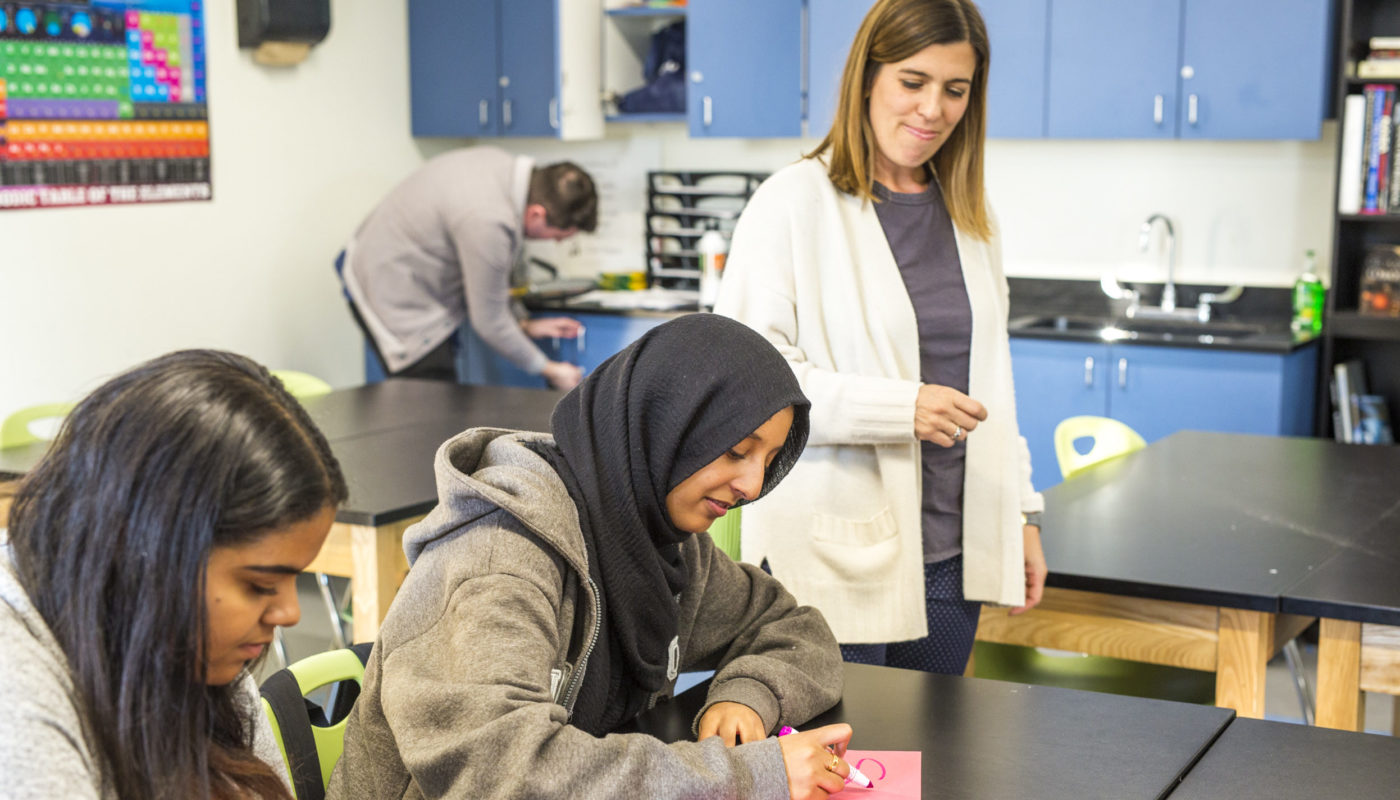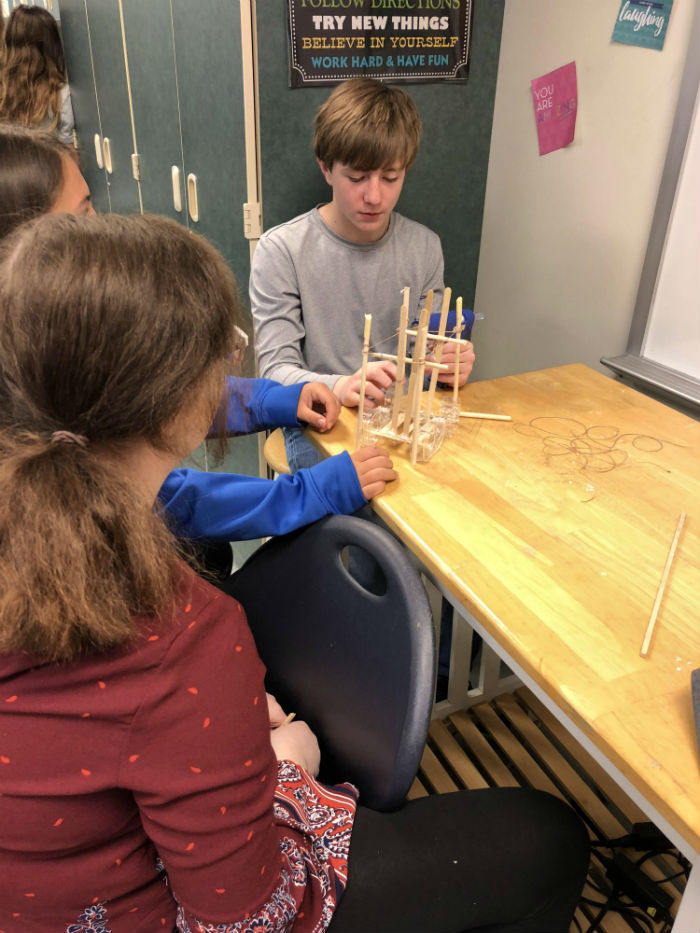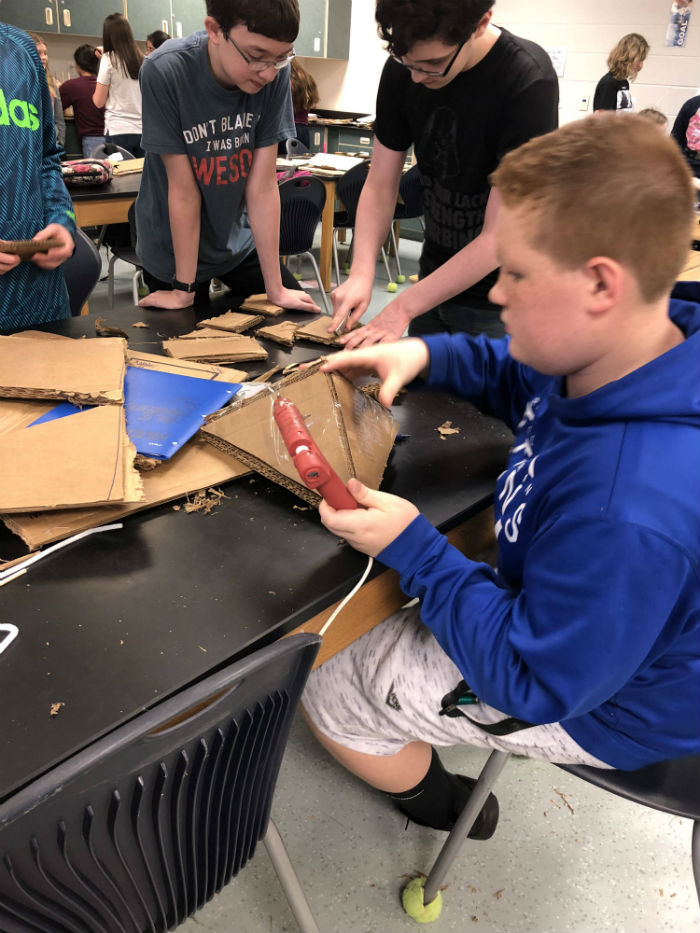
Relevance, purposefulness, community. Before Summit Learning, these words, along with customization, and collaboration, were ones that I hoped I was hitting with each lesson I taught as a science teacher at Royal Spring Middle School in Georgetown, Kentucky.
During the past two years of using Summit Learning in my classroom, I have realized the importance of planning lessons with intentionality. Summit Learning provides the structure and resources with which to make this intentional planning a reality on a daily basis.
The words I mentioned above are part of Summit Learning’s Look-For’s, a specific set of teaching actions to “Look-For” when observing a teacher in the classroom. This resource is currently available to educators and school leaders participating in the Summit Learning Program.
As I begin planning my first project in my third year of Summit Learning, these Look-For’s have become a defining part of my lesson planning process.
Starting the Year With Projects
I introduced students to the science project, “Don’t feel the Heat”, at the start of this school year. A few weeks before this project, I was already planning for how these Look-For’s would come to life. I would like to share how I’ve integrated them into the lifespan of the project.
In this project, students are asked to design, build, and test a device or package to control the flow of thermal energy. In the first lesson that introduces the project to the students, it is important to establish relevance and rigor of the project.
In this first lesson, students think about problem solving and how they can apply problem solving skills in their own lives.

Relevance
“Welcome! Today I am so excited to launch our first project. To get started, I want you to think about a time that you encountered a problem and how you went about solving that problem?”
This is how I apply relevance in the first lesson.
What: Relevance is students recognizing the significance that activities and objectives have to their interests and goals, prior knowledge, and real world.
How: Students have time within the lesson to think, write, then share about their problems, which gives them an opportunity to make the project relevant to their life.
Why: I further explain, “Engineers are one group of people that encounter problems and seek to come up with solutions to those problems. In this project you will be asked to think like an engineer and solve a problem from a set of four real-life scenarios.” This adds relevance to the real world.
Community
What: Community is created when students are known by their peers and teachers as individuals and are part of a learning environment that is positive, secure, and open to all backgrounds and perspectives.
How: After the introduction, students are asked to write down a time they encountered a problem and how they went about solving it.
I have students share their problem with the person sitting next to them. When asked to share out to the class, students share their partner’s problem and how their partner solved that problem. This creates community by allowing students to feel heard and valued by their partners.
Why: The class learns about each other’s problems or struggles and helps create a positive and secure learning environment.

Collaboration
After we establish the basic skills required to complete the project, it’s time to start experimenting.
What: Students collaborate to create a joint product, cooperatively solve a problem, or co-construct their understanding of a topic.
How: Groups of students build the tallest marshmallow tower they can using only a few given materials, such as spaghetti, tape, string, and a marshmallow.
Why: As students practice thinking like engineers together, they begin to understand how engineers problem-solve.
Customization
As we dive into the the project, which lasts five weeks, I think about how I can customize the project’s lessons to each student’s preferences for how to learn and their specific developmental levels.
What: By identifying students’ needs, customizing the project to them, and providing scaffolds, or learning aids, for each group, all students are able to complete the same checkpoint by the end of class.
How: For the project’s first checkpoint, or formative assessment of the Cognitive Skills, students construct an explanation referencing key vocabulary of heat, temperature, and thermal energy in constructing this explanation.
Some students have already mastered this vocabulary and are able to write the explanation with little help; some students have no knowledge yet; and others are somewhere in the middle.
Why: Students that have key vocabulary knowledge will be able to move on to the checkpoint in the project, which is to write an explanation of whether a beaker of warm water or the beaker of boiling water melts ice first and why.
The other students, who have no knowledge of, or are struggling with the vocabulary, will be able to attend a workshop with me. Students somewhere in the middle will have a task card, which is a guided set of instructions to help them reference the vocabulary they are struggling with.
Students are met where they are and have pathways for moving ahead with the proper amount of support.
Purposefulness
When students start the the year, I get a sense of where each student is in terms of their knowledge and abilities. In addition, students also have a “Science Starter” pre-assessment as they come into class to help them see and understand their needs in relation to key term we’ll learn throughout the year.
What: Purposefulness is to work with effort and energy to accomplish goals that connect to a meaningful purpose.
How: I work with students to help them understand what progress they can make and set goals to make that progress. Students are aware at all times of their progress toward achieving these goals.
Why: As students get used to setting goals, they’re able to make some decisions for themselves — like whether they need additional support or learning aids to help write their explanation for a checkpoint.

Intentional Planning at Its Best
Using Look-For’s and thinking about the instructional strategies of Summit Learning take some practice at the start of the school year, but in the end they’ve helped ensure that as a teacher, I plan intentionally and with purpose so that all students get what they need throughout the project.
As we wrap up this first project and prepare to test students’ models, I feel confident that all students understand the real-life relevance of the engineering process and can transfer these lessons outside of the classroom.
Students are challenged through rigorous activities and expectations, establish a sense of community with their peers, and practice collaborating with other.
Most importantly, they are challenged based on their needs to engage in the project with purpose and meaning.
To learn more about how Summit Learning teachers are customizing Projects in their classrooms, visit the Summit Learning Blog.

